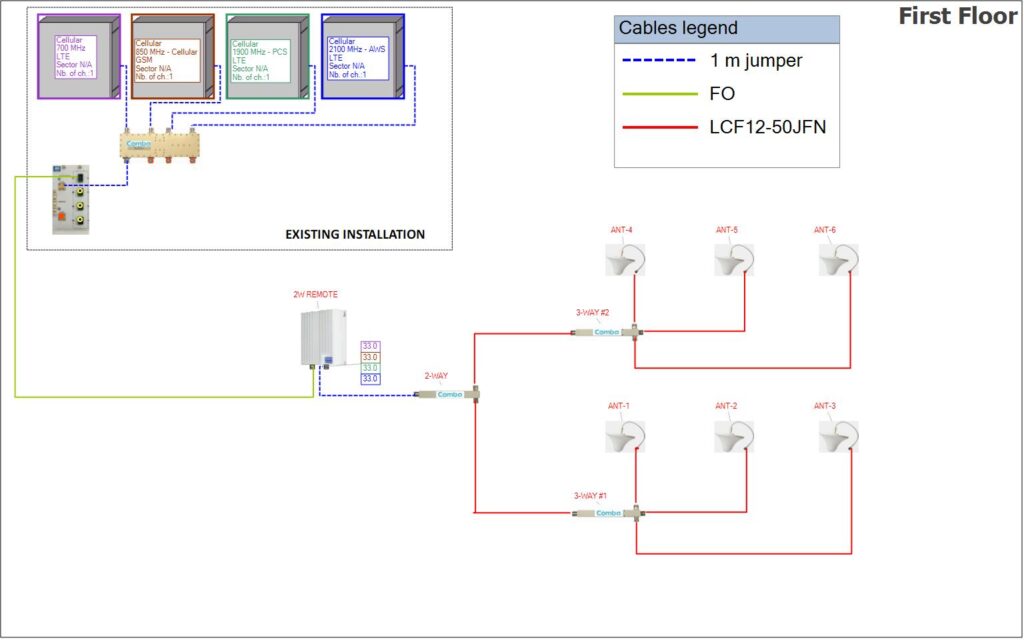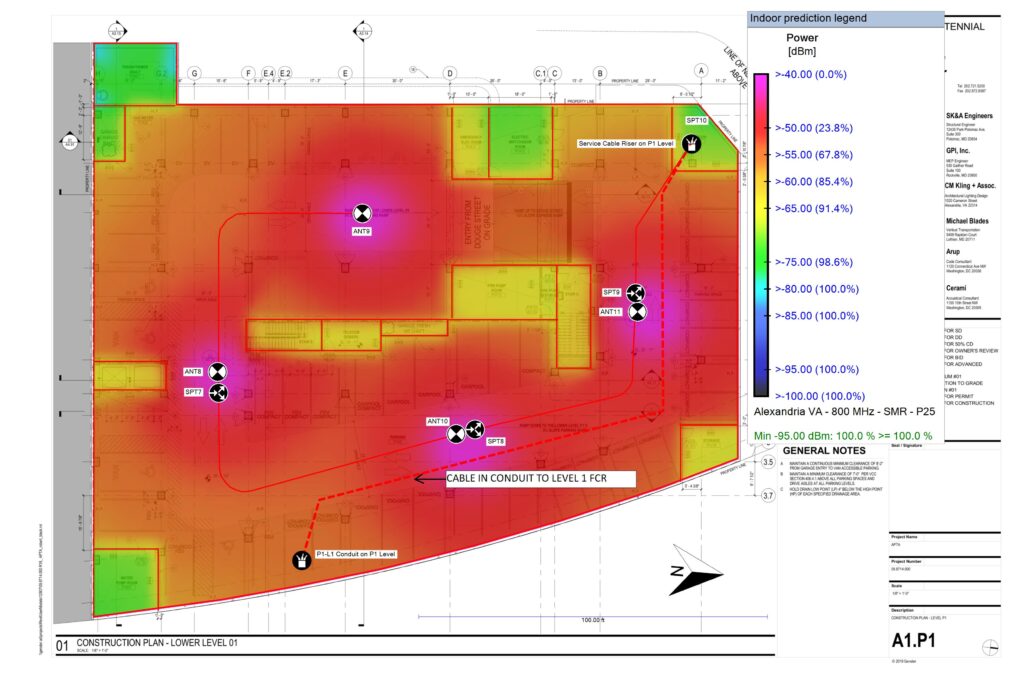DESIGN SERVICES

Donor Link Design
Our donor link design begins with research of the coverage requirements of the local code, and the identification of the public safety repeaters that will provide the donor signals for the in-building radio system. This includes donor location, tower heights, repeater antenna heights and directivity, and the frequencies to be supported. Using path profiling software, a preliminary determination of the donor path clearances accomplished, and a preliminary estimate of any possible obstructions and excess path loss.

When the path profile has been completed, a preliminary link budget for the donor link can be accomplished, providing estimated downlink signal levels as in input for the downlink coverage design in iBwave®. As the iBwave® design is completed, the uplink gains and design parameters are updated.


In-Building Coverage Design

InBuildingRadio uses the industry standard iBwave® Enterprise software, modeled using the Fast Ray Tracing propagation model, which is the most accurate model currently available.
A project file is created and building drawings are imported into iBwave® for each floor of the building, including the roof and nay below ground parking levels. After review of the plans, the tentative locations of the in-building radio equipment, donor antenna location, and riser locations are coordinated with the client and the building owner.
After the floor plans are imported, the location, height, and materials of the walls and ceilings are manually constructed and entered. Particular attention is paid to the coverage for critical area locations, such as stairwells, elevator lobbies, fire control and pump rooms.
Tentative locations for antennas are identified based upon the geometry of the building, critical coverage areas, and normal antenna spacing. These locations are fine-tuned by running the propagation models, and adjusting antenna locations and quantities until adequate coverage is obtained.
